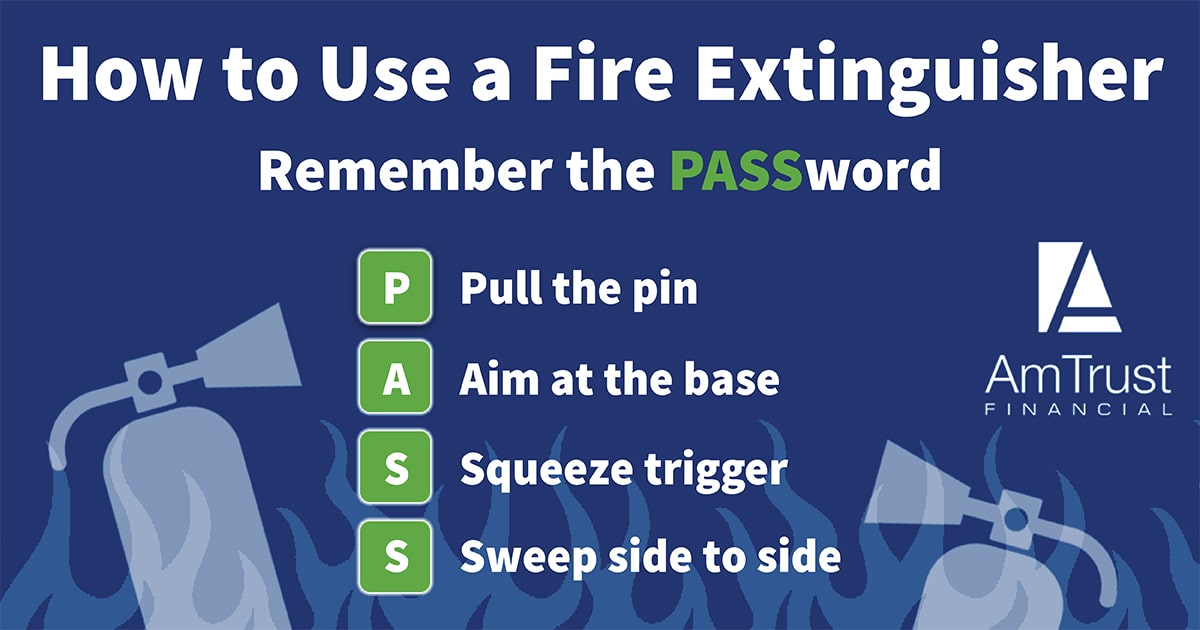According to recent statistics from the
National Fire Protection Association (NFPA ), between the years 2011 and 2015 fire departments in the U.S. responded to an estimated 5,750 structure fires in health care properties each year. These fires led to an average of 157 civilian injuries and around $50 billion in property damage. As the goal of health care facilities is to promote health and well-being, it’s vital that providers ensure the safety and security of the building for both the patients and the employees.
Health care facilities are usually public buildings that can contain offices, restrooms, waiting rooms, dining rooms, patient rooms, and many other common spaces. These types of public facilities have portable fire extinguisher requirements governed largely by NFPA 10 Standard for Portable Fire Extinguishers.

Updates to Portable Fire Extinguisher Standards for Health Care Facilities
However, there are some special and unique features health care facilities possess which necessitate specific requirements for portable fire extinguishers. In September of 2017, updates were made to the NFPA’s 99 Health Care Facilities Code 2018 and NFPA 101 Life Safety Code 2018 which affected the way these facilities utilize portable fire extinguishers onsite.
The 2018 updates to NFPA 99 lists specific requirements regarding the types of fire extinguishers used in particular areas within health care facilities. Updates to NFPA 101 affects wall-mounted fire extinguishers, ensuring they comply with accessibility standards under the Americans with Disabilities Act (ADA).
Some of the specific portable fire extinguisher standards in health care facilities include:
- The use of non-ferrous/non-magnetic fire extinguishers in magnetic resonance imaging (MRI) equipment and associated rooms. The extremely powerful magnets used in MRI equipment can make a deadly flying missile of even very large, heavy objects that are attracted to magnets (like a steel-body fire extinguisher), so only non-magnetic objects are permitted in the vicinity of MRI suites.
- Type K portable fire extinguishers must be provided in areas where there is potential for a fire involving combustible cooking media, such as vegetable oils, animal oils or fats. Since many health care facilities contain integral kitchens, this long-established kitchen standard is now referenced as health care specific standards. Typically, automatic fire suppression systems will also be required to protect the actual cooking appliances in addition to the type K portable extinguishers.
- Telecommunications entrance facilities and equipment rooms for electronic health records must be provided with clean agent portable fire extinguishers. Clean agent is defined as “electrically nonconductive, volatile, or gaseous fire extinguishant that does not leave a residue upon evaporation.” Dry-chemical and water-mist fire extinguishers can damage sensitive electronic equipment in these areas. Additionally, operating rooms must be provided with water-mist or clean agent portable fire extinguishers.
- Wall-mounted portable fire extinguishers must now not protrude from the wall surface on which they are mounted more than four and a half inches if the extinguisher is below 38 inches from the floor. If the extinguisher is above 38 inches from the floor, it should protrude no more than four inches from the wall. This applies whether the fire extinguisher is mounted directly to the wall or is in a cabinet. Many facilities find they need to install recessed cabinets in the wall to meet this new (2017) requirement of NFPA 99. There is at least one fire extinguisher manufacturer that is now making “flattened” profile extinguishers specifically to meet this requirement.
In all cases, employees who are authorized or expected to use extinguishers should be trained on how and when to use portable fire extinguishers, with periodic refresher training. Personnel in the facility should be familiar enough with the extinguishers to know how to remove them from their mountings, remove the safety pins and actuate the extinguishers.
Properly Using Portable Fire Extinguishers in Health Care Facilities
Our infographic below shares some helpful tips on the proper use of portable fire extinguishers in health care facilities and other public buildings.

Loss Control from AmTrust Financial
Visit AmTrust’s Loss Control Department’s
new website to find helpful resources regarding
workplace safety,
commercial property protection and more. It’s our goal to help insureds identify specific hazards and offer solutions that fit each operation. We are dedicated to providing the right recommendations and resources necessary to create the most effective loss prevention program for your organization’s needs. Please
contact us today to learn more.
This material is for informational purposes only and is not legal or business advice. Neither AmTrust Financial Services, Inc. nor any of its subsidiaries or affiliates represents or warrants that the information contained herein is appropriate or suitable for any specific business or legal purpose. Readers seeking resolution of specific questions should consult their business and/or legal advisors.